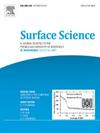Electrical activity of aluminum, boron, and n-type impurities defect-complexes in germanium: Implications for enhanced Ge-based devices
IF 2.1
4区 化学
Q3 CHEMISTRY, PHYSICAL
引用次数: 0
Abstract
Studies on point defects in germanium (Ge) are increasing, primarily because these defects have the potential to modify the electronic and optical properties of Ge, thereby enhancing device applications. While significant progress has been made in defect studies, a comprehensive understanding of defect complexes resulting from interactions between -type (Al or B) and -type atoms (DX and DX; where D = Al, B, and X = N, P, As, Sb) is still lacking. Therefore density functional theory calculations of electrically active defect levels in Ge that are caused by interactions between -type impurity atoms and Al or B, are presented. For defect-complexes formed by Al and -type atoms, Al and P exhibit the highest formation stability under equilibrium conditions. Conversely, BP represents the most energetically favorable defect-complex. With the exception of BN, the energetic stability of all defect-complexes suggests that Al and B interstitials form strong bonds with -type substitutional atoms. Electrical behavior analyses of these defects reveal that defect-complexes formed by Al and -type atoms induce deep defect levels. Specifically, AlN acts as an acceptor, while AlAs behaves as a donor. The defects BSb, BP, and BAs donate electrons to the conduction band at energy levels within the range of 3 . Furthermore, BSb induces shallow donor levels, whereas BP induces acceptor levels. This study opens new research opportunities in the experimental synthesis of defects and offers insights into controlling them, potentially enhancing electronic devices.

求助全文
约1分钟内获得全文
求助全文
来源期刊

Surface Science
化学-物理:凝聚态物理
CiteScore
3.30
自引率
5.30%
发文量
137
审稿时长
25 days
期刊介绍:
Surface Science is devoted to elucidating the fundamental aspects of chemistry and physics occurring at a wide range of surfaces and interfaces and to disseminating this knowledge fast. The journal welcomes a broad spectrum of topics, including but not limited to:
• model systems (e.g. in Ultra High Vacuum) under well-controlled reactive conditions
• nanoscale science and engineering, including manipulation of matter at the atomic/molecular scale and assembly phenomena
• reactivity of surfaces as related to various applied areas including heterogeneous catalysis, chemistry at electrified interfaces, and semiconductors functionalization
• phenomena at interfaces relevant to energy storage and conversion, and fuels production and utilization
• surface reactivity for environmental protection and pollution remediation
• interactions at surfaces of soft matter, including polymers and biomaterials.
Both experimental and theoretical work, including modeling, is within the scope of the journal. Work published in Surface Science reaches a wide readership, from chemistry and physics to biology and materials science and engineering, providing an excellent forum for cross-fertilization of ideas and broad dissemination of scientific discoveries.
 求助内容:
求助内容: 应助结果提醒方式:
应助结果提醒方式:


